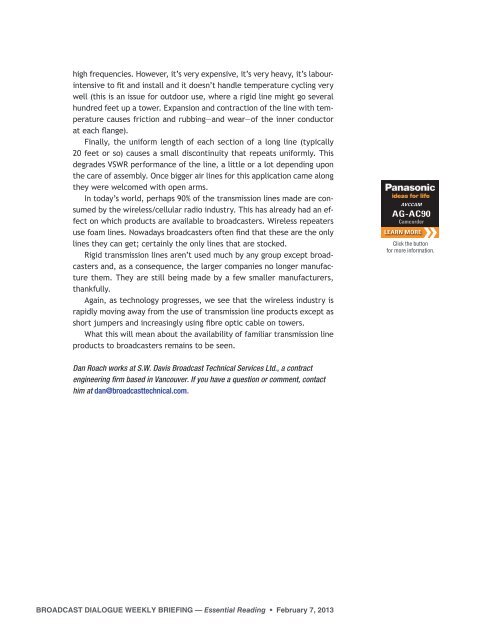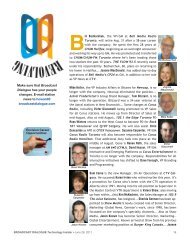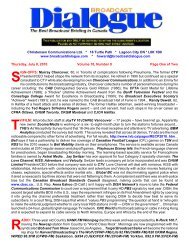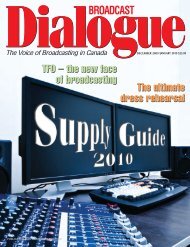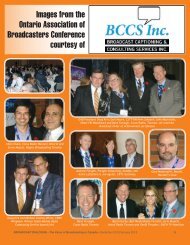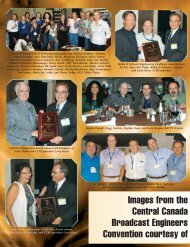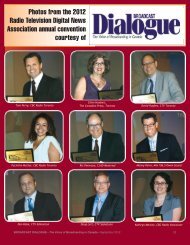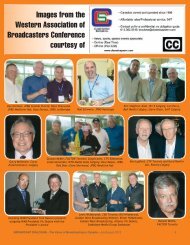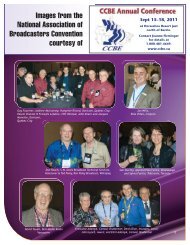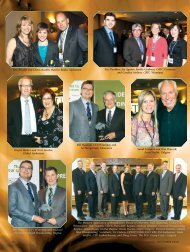Current PDF Edition - Broadcast Dialogue
Current PDF Edition - Broadcast Dialogue
Current PDF Edition - Broadcast Dialogue
You also want an ePaper? Increase the reach of your titles
YUMPU automatically turns print PDFs into web optimized ePapers that Google loves.
high frequencies. However, it’s very expensive, it’s very heavy, it’s labourintensive<br />
to fit and install and it doesn’t handle temperature cycling very<br />
well (this is an issue for outdoor use, where a rigid line might go several<br />
hundred feet up a tower. Expansion and contraction of the line with temperature<br />
causes friction and rubbing—and wear—of the inner conductor<br />
at each flange).<br />
Finally, the uniform length of each section of a long line (typically<br />
20 feet or so) causes a small discontinuity that repeats uniformly. This<br />
degrades VSWR performance of the line, a little or a lot depending upon<br />
the care of assembly. Once bigger air lines for this application came along<br />
they were welcomed with open arms.<br />
In today’s world, perhaps 90% of the transmission lines made are consumed<br />
by the wireless/cellular radio industry. This has already had an effect<br />
on which products are available to broadcasters. Wireless repeaters<br />
use foam lines. Nowadays broadcasters often find that these are the only<br />
lines they can get; certainly the only lines that are stocked.<br />
Rigid transmission lines aren’t used much by any group except broadcasters<br />
and, as a consequence, the larger companies no longer manufacture<br />
them. They are still being made by a few smaller manufacturers,<br />
thankfully.<br />
Again, as technology progresses, we see that the wireless industry is<br />
rapidly moving away from the use of transmission line products except as<br />
short jumpers and increasingly using fibre optic cable on towers.<br />
What this will mean about the availability of familiar transmission line<br />
products to broadcasters remains to be seen.<br />
AVCCAM<br />
AG-AC90<br />
Camcorder<br />
LEARN MORE<br />
Click the button<br />
for more information.<br />
Dan Roach works at S.W. Davis <strong>Broadcast</strong> Technical Services Ltd., a contract<br />
engineering firm based in Vancouver. If you have a question or comment, contact<br />
him at dan@broadcasttechnical.com.<br />
BROADCAST DIALOGUE WEEKLY BRIEFING — Essential Reading • February 7, 2013


